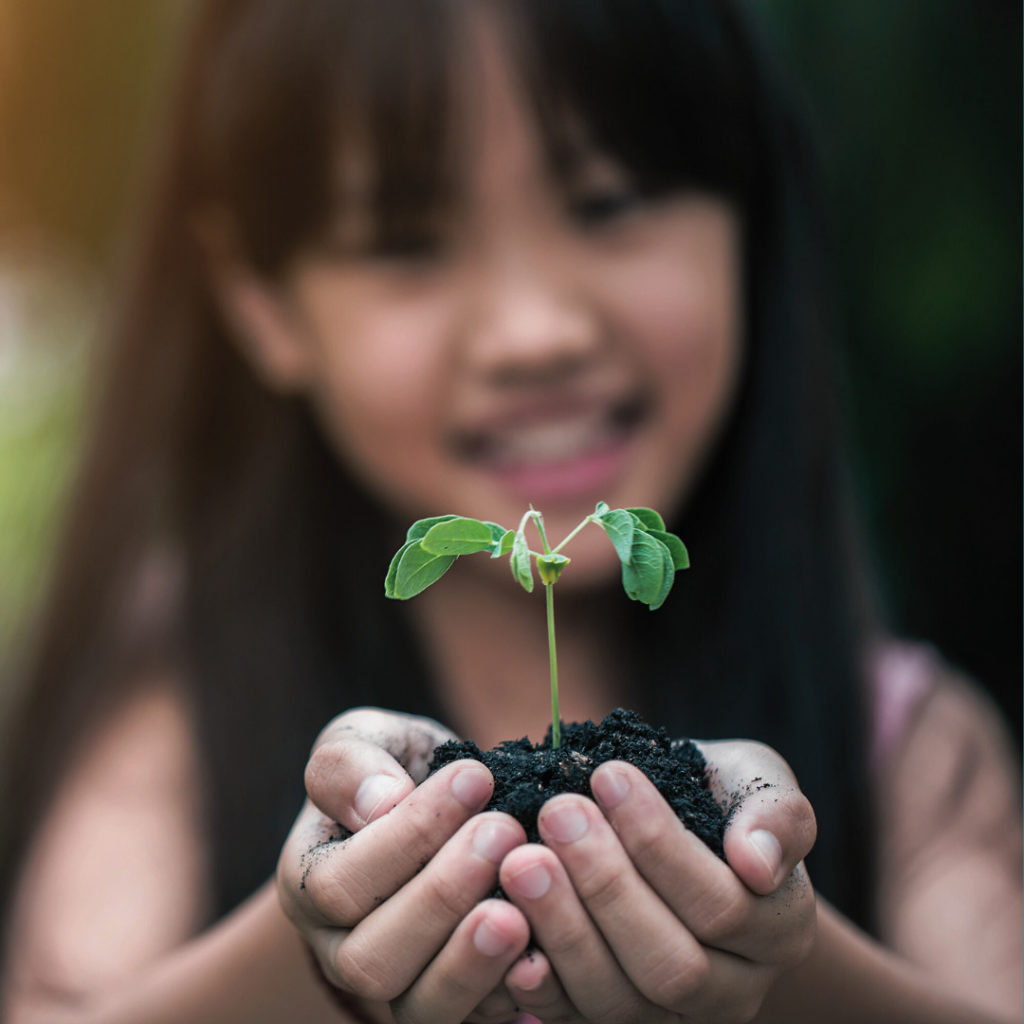
Introduction
Do you remember the first time you plunged your hands into the earth, feeling the cool soil slip through your fingers? The thrill of seeing your first sprout emerge, a green promise pushing through the dirt? Gardening is more than just a hobby or a chore. It’s a profound experience that connects us to the natural world and teaches us about life’s delicate cycles.
Now, imagine sharing these invaluable experiences with your kids, sparking their curiosity and fostering a love for nature that can last a lifetime. Sounds appealing, right? Gardening with kids can be a joyful journey, filled with discoveries and shared achievements. It’s an opportunity to instill values such as responsibility, patience, and environmental stewardship. But how can we get our kids excited about gardening? How do we make it a game that they’re eager to play, a world they’re yearning to explore?
This blog post aims to turn your garden into a vibrant, educational playground. We’ll discuss techniques to spark interest, nurture creativity, and make the garden a cherished space for your entire family. Whether you’re a gardening guru or a novice green thumb, these strategies will turn your little ones into eager gardeners, ready to dig in and get their hands dirty!
The Benefits of Gardening for Kids

Gardening is much more than just an enjoyable pastime; it’s an enriching experience that offers children a multitude of benefits spanning health, education, and psychology.
Health Benefits
Gardening is a fantastic way to get your kids outdoors and moving. It’s a form of exercise that promotes physical development, enhancing fine motor skills as kids plant seeds or prune plants. Plus, when children grow their own fruits and vegetables, they’re more likely to eat them, promoting a healthy diet and lifestyle.
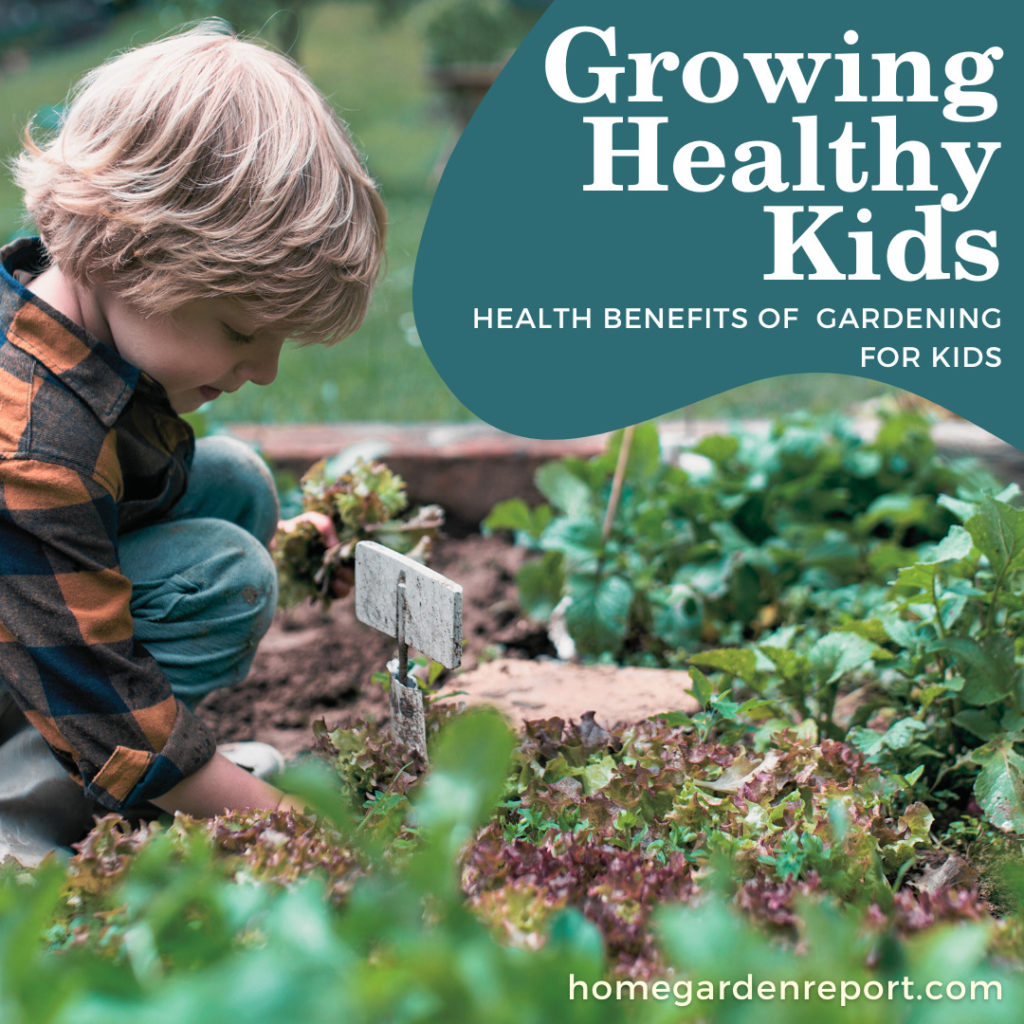
Here’s a table outlining some of the health benefits of gardening for children:
| Health Benefit | Description |
|---|---|
| Physical Exercise | Gardening involves physical activity such as digging, planting, and watering, which improves fitness. |
| Vitamin D Boost | Spending time outdoors while gardening exposes children to sunlight, leading to vitamin D synthesis. |
| Improved Motor Skills | Handling tools, carrying watering cans, and planting seeds enhance fine and gross motor skills. |
| Sensory Stimulation | Engaging with different textures, smells, and colors in the garden stimulates the senses and promotes sensory development. |
| Stress Reduction | Gardening can help reduce stress levels and improve mood by providing a calm and peaceful environment. |
| Increased Vegetable Intake | Children who grow their own vegetables are more likely to eat them, promoting a healthy diet. |
| Environmental Awareness | Gardening teaches children about nature, ecosystems, and the importance of protecting the environment. |
| Emotional Well-being | Caring for plants and witnessing their growth fosters a sense of accomplishment and boosts self-esteem. |
| Cognitive Development | Gardening encourages problem-solving, critical thinking, and learning about plant life cycles and biology. |
Educational Benefits
Gardening is a live, interactive science lesson. It offers children a hands-on opportunity to observe the life cycle of plants, understand photosynthesis, and appreciate the importance of weather and seasons. It also instills a sense of responsibility as they care for their plants and see the consequences of their actions directly.
Mental Well-Being
From a psychological standpoint, gardening boosts mental well-being. It can foster a sense of achievement, enhance focus and patience, and reduce stress levels, even in children. Moreover, gardening encourages creativity and problem-solving skills as kids decide where to plant, how to take care of their plants, and how to cope with gardening challenges like pests or diseases.
Let’s take the well-known example of the “Cabbage Kid”, Katie Stagliano. At the age of 9, Katie grew a forty-pound cabbage in her backyard, which she donated to a local soup kitchen where it helped to feed more than 275 people. This experience opened her eyes to the issue of food insecurity and the potential of gardening to combat it. Inspired, Katie started Katie’s Krops, a not-for-profit that empowers kids across the U.S. to grow food and donate the harvest to people in need. Gardening not only instilled a sense of responsibility and accomplishment in Katie, but it also allowed her to make a significant impact on her community.
By engaging in gardening, children get to experience these amazing benefits first-hand, but how can we, as parents or caregivers, make this activity appealing and fun for them? The next sections will help us unlock this “green” magic.
Choosing the Right Garden Space and Plants

One of the first steps in cultivating your child’s interest in gardening is choosing the right space and plants. Here’s how:
Start Small
Begin with a small, manageable garden space that your kids can call their own. Even a few pots or a small raised bed is a perfect starting point. This gives your child a sense of ownership and responsibility, without overwhelming them.
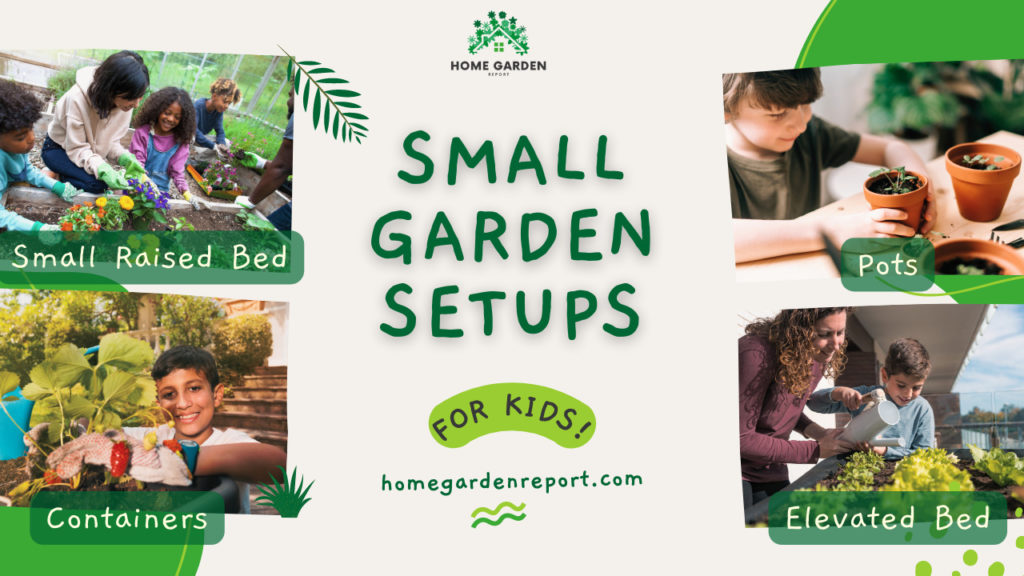
Choose Child-Friendly Plants
Next, let’s pick out the plants. To keep your child interested and motivated, choose plants that are easy to grow and maintain.
Here’s a table of some child-friendly plants along with descriptions explaining why each one is excellent for getting kids excited about gardening.
| Plant Name | Description |
|---|---|
| Sunflowers | Sunflowers are giants that capture a child’s imagination with their tall stems and gigantic flower heads. Kids will be thrilled to watch these vibrant plants grow taller and taller, and they can even harvest the seeds to enjoy a tasty treat or save them for next year’s garden. |
| Strawberries | Strawberries are delicious, bite-sized fruits that children adore. Planting strawberry plants allows kids to witness the entire growing process, from the emergence of delicate white flowers to the transformation into juicy red fruits. The sweet reward encourages their gardening enthusiasm. |
| Snapdragons | Snapdragons are whimsical flowers that come in various colors and resemble little dragon faces. Children will be captivated by their unique shape and vibrant hues. Snapdragons are easy to grow from seed, making them an ideal choice for kids to sow and enjoy their own personal dragon garden. |
| Carrots | Carrots are root vegetables that excite kids because they are usually associated with the beloved character, Bugs Bunny. Children can witness the carrot tops grow tall and lush before discovering the treasure hidden beneath the soil—the bright orange root that can be eaten or used in recipes. |
| Marigolds | Marigolds are cheerful flowers with vibrant yellow, orange, and red blooms. They are hardy and easy to grow, making them perfect for little gardeners. Kids will enjoy their bright colors and may even use the flowers for crafts or as decorations, fostering creativity and a sense of pride in their garden. |
| Cherry Tomatoes | Cherry tomatoes are small, bite-sized fruits bursting with flavor. Growing cherry tomato plants gives children the opportunity to witness the magic of transforming tiny seeds into juicy, colorful tomatoes. Harvesting and tasting these treats right from the vine will make kids eager to garden year after year. |
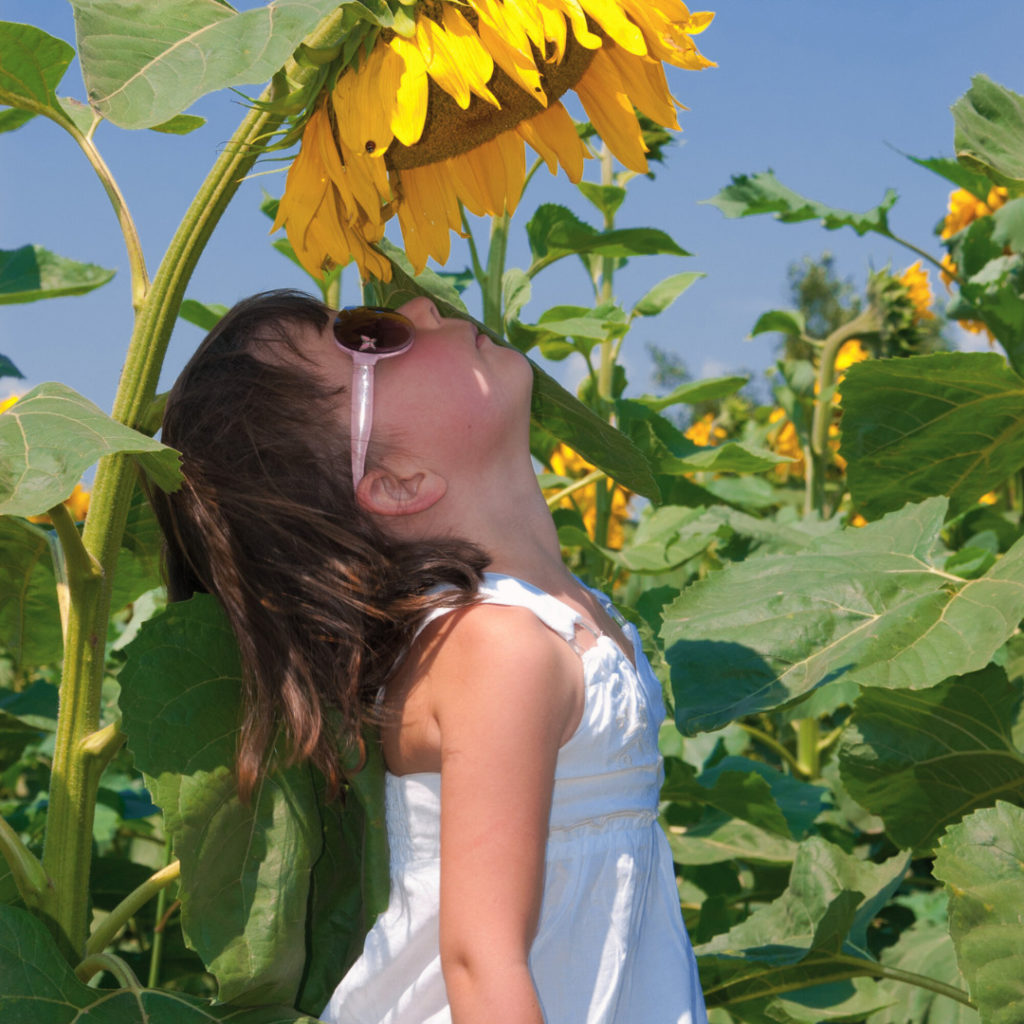
1. Sunflowers
Sunflowers are like nature’s skyscrapers, towering above all other plants in the garden. With their tall stems and gigantic flower heads, they capture a child’s imagination from the very beginning. Kids will be thrilled to plant these seeds and witness their sunflowers grow taller and taller, seemingly reaching for the sun itself. As the summer days go by, the sunflowers’ vibrant yellow petals will bloom, turning the garden into a sunny paradise. And the best part? Children can harvest the sunflower seeds to enjoy a tasty treat or save them for next year’s garden, ensuring that the sunflowers’ legacy lives on. Watching these majestic flowers come to life and discovering the hidden treasure within will undoubtedly ignite a sense of wonder and excitement in every young gardener.

2. Strawberries
What’s red, juicy, and adored by children around the world? Strawberries, of course! Planting strawberry plants is like inviting magic into the garden. Kids will be enchanted as they witness the entire growing process unfold before their eyes. Delicate white flowers will emerge, buzzing with the activity of pollinators, before transforming into plump, juicy red fruits. The anticipation of that sweet reward is enough to keep children eagerly checking on their strawberry plants every day. And when the time finally comes, they get to savor the taste of their hard work—a mouthful of nature’s candy. Whether eaten straight from the plant or added to a summery dessert, strawberries are bound to make gardening an exciting and delicious adventure for kids.
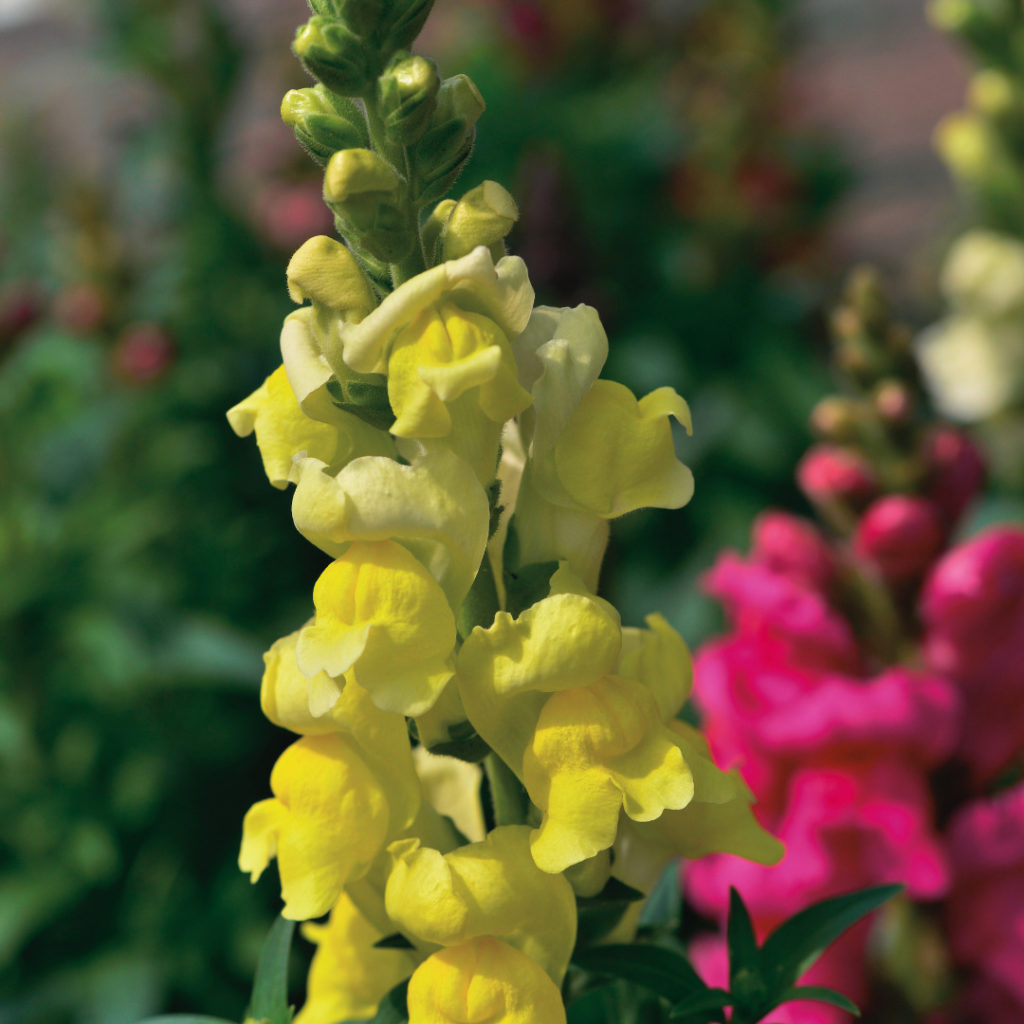
3. Snapdragons
Prepare to enter the world of imagination with snapdragons! These whimsical flowers come in a variety of colors and resemble tiny dragon faces. Kids will be captivated by their unique shape and vibrant hues, creating an enchanting atmosphere in the garden. Planting snapdragons is a delightful experience, as they are easy to grow from seed. Children can sow the seeds themselves and eagerly wait for the tiny green sprouts to emerge. As the snapdragons grow taller, the garden transforms into a magical realm filled with colorful dragons. These charming flowers can become the centerpiece of a child’s personal dragon garden, encouraging imaginative play and fostering a sense of ownership over their own slice of nature.
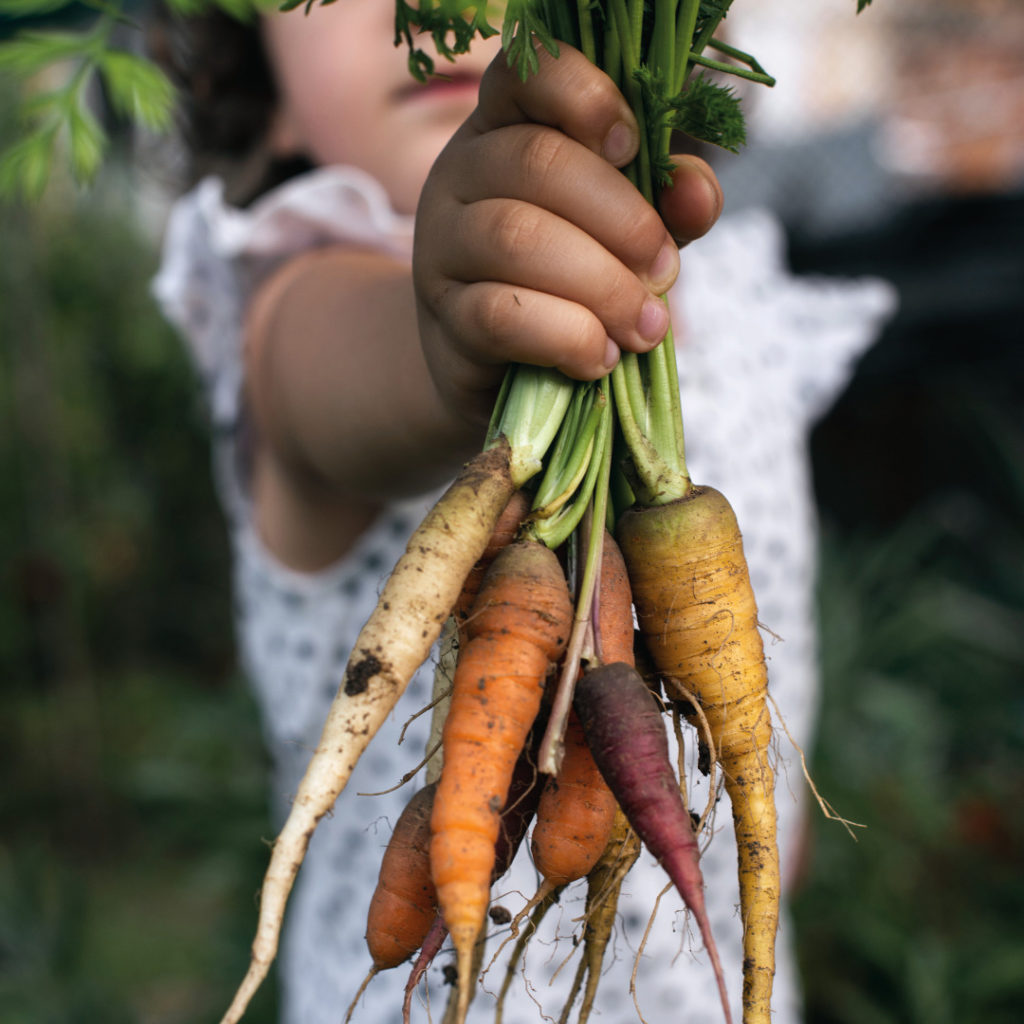
4. Carrots
Who hasn’t heard of Bugs Bunny munching on a crunchy carrot? Carrots are not only tasty but also fascinating to grow. Children will be amazed to see the green carrot tops grow tall and lush, resembling a mini forest in the garden. With anticipation, they will dig into the soil, discovering the treasure hidden beneath—the bright orange root that can be eaten or used in delicious recipes. Growing carrots not only encourages kids to eat their vegetables but also teaches them the importance of patience and nurturing. As they care for their carrot plants, they’ll witness the magic of nature’s bounty, sparking joy and curiosity in their gardening journey.

5. Marigolds
For a burst of sunshine in the garden, marigolds are the perfect choice. These cheerful flowers come in vibrant yellow, orange, and red hues, spreading warmth and joy wherever they bloom. Marigolds are hardy and easy to grow, making them ideal for little gardeners. Children will be captivated by their bright colors, and they may even use the flowers for crafts or as decorations, fostering creativity and a sense of pride in their garden. Planting marigolds is like painting a canvas with nature’s own paintbrush, creating a masterpiece that kids can proudly call their own. These vibrant blooms will not only attract beneficial insects to the garden but also serve as a constant reminder of the beauty that can arise from a little love and care.
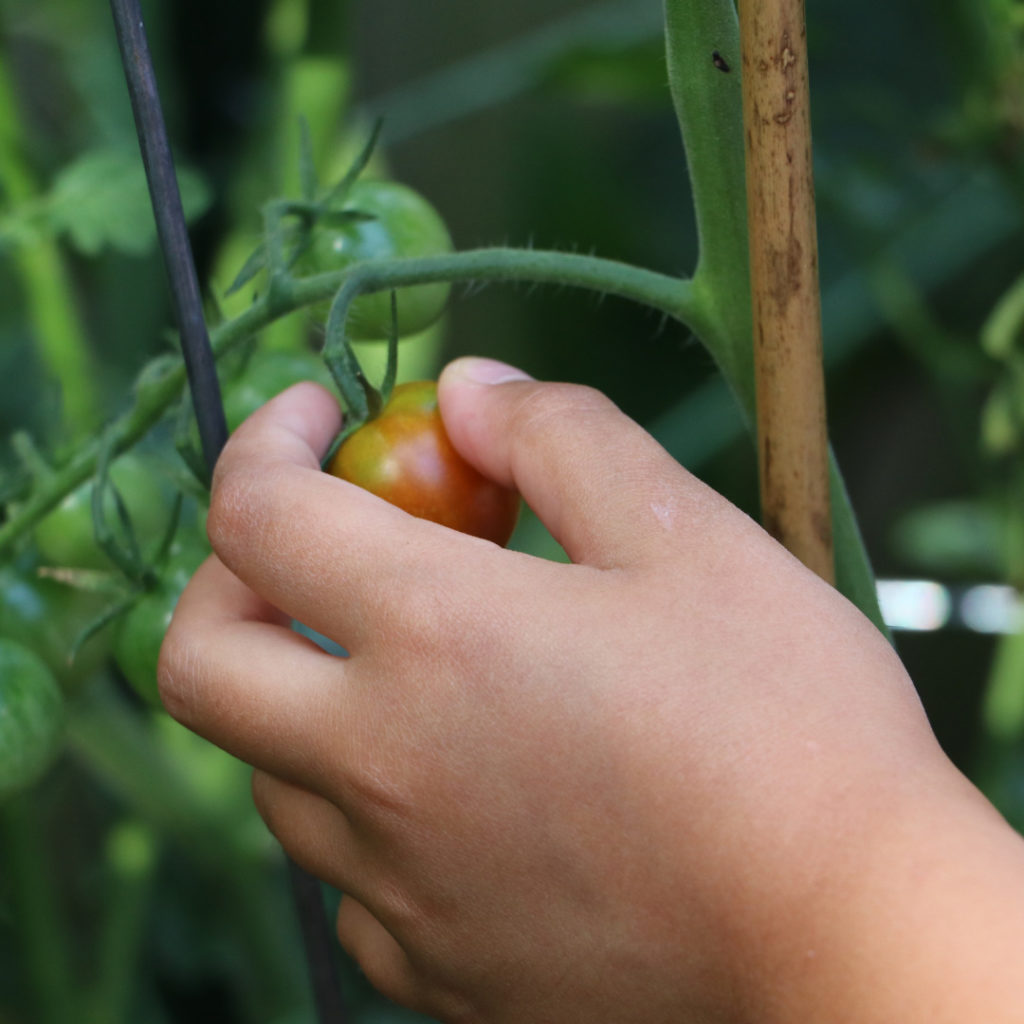
6. Cherry Tomatoes
Get ready for a burst of flavor straight from the garden! Cherry tomatoes are small, bite-sized fruits that pack a big punch. Growing cherry tomato plants allows children to witness the magic of transforming tiny seeds into vibrant, juicy tomatoes. From the moment the seeds sprout, kids will eagerly watch as the tomato plants develop, bursting with clusters of tiny green fruits. As the summer sun works its magic, the tomatoes will gradually transform into a rainbow of reds, yellows, and oranges. The best part? Kids can pluck the ripe cherry tomatoes right from the vine and savor their sweet, tangy flavor on the spot. The experience of growing, harvesting, and tasting these garden gems will leave kids yearning for more gardening adventures, creating a lifelong love for nature’s bounty.
Here are a couple of other suggested child-friendly plants to try :
- Radishes and lettuce also work well because they mature quickly and can be harvested within weeks, giving your child the satisfaction of a quick result.
- Beans are fun to grow as they develop quickly and produce a lot, teaching kids about abundance in nature.
By introducing child-friendly plants into a child’s gardening journey, we can ignite their passion for nature, foster their sense of wonder, and encourage a lifelong appreciation for the beauty and rewards that gardening offers. Remember, the goal is to make gardening a fun and rewarding experience. Choose plants that will give your child a quick win, and they’ll be more likely to stick with it and develop a love for gardening over time.
But how about we make plant selection a bit more engaging? Turn it into a game. Let your child pick their favorite vegetables, flowers, or herbs from a garden center, or from a catalog and see who can find the most red vegetables or the most fragrant herbs. This approach adds an extra layer of excitement to the gardening process. In the next section, we’ll explore creative ways to keep the gardening momentum going by making the process enjoyable and imaginative. So, gather your little ones, grab your gardening tools, and embark on a magical journey through the vibrant world of plants! Happy gardening!
Making Gardening Fun, Creative and Educational

Now that we have the right space and plants, how can we make gardening more than just planting and waiting? Here are some unique, engaging ideas to keep your kids excited about their garden:
Turn Gardening Into a Game
Create friendly competitions between your kids or their friends. Who can plant the most seeds in a row? Who can water the plants without spilling? You could also arrange a scavenger hunt, with children needing to find different plants, insects, or garden features.
Games to Get Kids Excited About Gardening :
| Game | Description | Age Group | Skills Developed |
|---|---|---|---|
| Seed Sort | Kids are given a variety of seeds and asked to sort them by size, color, or plant type. | 4-6 years | Fine motor skills, categorization, and plant identification |
| Plant Pictionary | Based on the classic Pictionary game, but all words are plant-related. | 6-10 years | Vocabulary, quick thinking, creativity, drawing, and teamwork |
| Garden Scavenger Hunt | A list of items (flowers, insects, leaves, etc.) is given and kids have to find them in the garden. | 5-12 years | Observation skills, familiarity with nature, and physical activity |
| Veggie Bingo | Traditional Bingo game, but using cards filled with images of various vegetables instead of numbers. | 5-8 years | Recognition of different vegetables, concentration, and social skills |
| Soil Sack Race | Classic race in which kids jump to the finish line in potato sacks; to connect it with gardening, you can use actual old garden soil or mulch bags. | 6-12 years | Physical fitness, competitiveness, and coordination |
| Grow a Sunflower Race | Each child is given a sunflower seed to plant and care for; the one with the tallest sunflower after a month wins. | 4-10 years | Responsibility, patience, and understanding of plant growth |
| Garden Memory Game | A set of cards with images of plants, flowers, or insects is used to play the traditional memory game. | 5-10 years | Memory, concentration, and plant or insect identification |
| Plant Charades | Kids act out different plants or gardening actions without speaking, while others guess. | 7-12 years | Physical creativity, teamwork, and plant vocabulary |
| Garden Quizzes | Trivia quizzes about different types of plants, their care, and their benefits. | 8-12 years | Knowledge about plants, memory, and competitive spirit |
| Seed Match Game | Kids have to match the seeds to the correct plant. | 4-8 years | Cognitive development, fine motor skills, observational, memory, patience and concentration |
| Flower Power Puzzle | Kids make puzzles out of pictures of different flowers from magazines or printed materials, then others solve them. | 5-9 years | Problem-solving, fine motor skills, and flower identification |
| Fruit and Veggie Twister | Twister game using images of fruits and veggies instead of colors on the mat. | 6-10 years | Physical fitness, flexibility, and recognition of different fruits and vegetables |
| Seed Spitting Contest | Kids try to spit seeds (like watermelon seeds) as far as they can; brings attention to seeds and their purpose in plant reproduction. | 7-12 years | Fun, competitiveness, and understanding of seed dispersion |
| DIY Garden Decor | Kids use recycled materials to create garden decorations like painted rocks or homemade bird feeders. | 5-12 years | Creativity, recycling awareness, and crafting skills |
| Insect Counting Game | A game where kids count different insects they find in the garden. This can teach them about biodiversity and the importance of insects. | 3-6 years | Counting, insect identification, understanding biodiversity |
| Plant Name Spelling Bee | Kids are challenged to spell the names of different plants correctly. | 7-12 years | Spelling, vocabulary, and plant knowledge |
| Edible Plant Quiz | A quiz where children must identify which plants are edible and which are not. | 6-10 years | Knowledge about edible plants, safety awareness, and memory |
| Vegetable Guessing Game | Kids feel a vegetable with their eyes closed and try to guess what it is. | 4-7 years | Sensory skills, knowledge of vegetables, and concentration |
| Gardening Hopscotch | A classic hopscotch game but with garden-themed tasks at each number, such as ‘plant a seed’, ‘water a flower’, etc. | 5-9 years | Coordination, balance, and understanding of gardening tasks |
| Bug Hunt | Children look for common garden bugs, using a guide to identify them. | 6-10 years | Observation skills, knowledge about insects, and exploration |
| Herb Sniff Test | Kids try to identify different herbs based on their smell. | 5-10 years | Sensory skills, memory, and herb recognition |
| Plant Life Cycle Game | An interactive game where kids sequence the stages of a plant’s life cycle. | 6-9 years | Understanding of life cycles, sequencing, and plant knowledge |
| Watering Can Race | A relay race where kids must fill a watering can and carry it to a finish line to water a plant. | 5-10 years | Teamwork, physical fitness, and coordination |
| Garden Treasure Map | Children create treasure maps of the garden and swap with others to find the ‘treasure’. | 7-12 years | Map making, spatial understanding, and creativity |
| Composting Challenge | Kids collect kitchen scraps suitable for composting and learn about the composting process. | 8-12 years | Understanding of composting, responsibility, and recycling awareness |
| Plant Doctor | An interactive game where children diagnose plant diseases or pests based on symptoms and learn how to treat them. | 8-12 years | Plant care, problem-solving, and knowledge about diseases and pests |
Unleash Their Creativity
Encourage your children to think of the garden as their canvas. They could plant flowers or vegetables in the shape of their initials or favorite animal. Let them paint garden signs or decorate pots. They could also create a fairy garden or a mini dinosaur park with tiny houses, figures, and furniture.
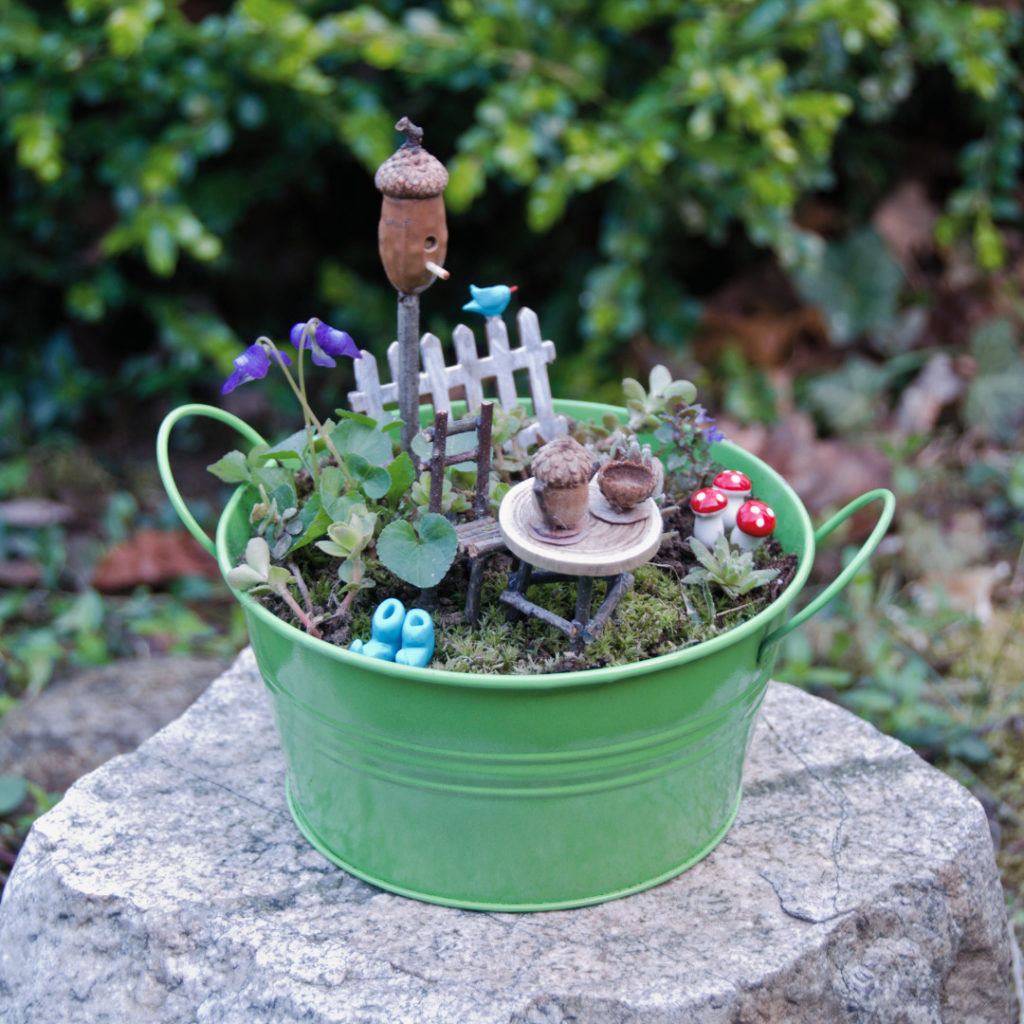
Make it a Family Activity
Gardening can bring the whole family together. Get everyone involved in planting, watering, and harvesting. Have a picnic in your garden or roast marshmallows over a small campfire (safely supervised!). Share stories and make memories in your green oasis.

Create a Learning Experience
Gardening offers a fantastic platform to learn about science (like photosynthesis, plant biology, and ecosystems), math skills (counting seeds, measuring plant height, understanding time), and artistic expression (painting pots, creating garden signs, and maintaining a garden journal). These hands-on lessons bring school subjects to life and provide a creative outlet. Consider enhancing these experiences with a nature walk to introduce different plants and animals in your local area.
Activities to Get Kids Excited About Gardening :
| Activity | Description | Age Group | Skills Developed |
|---|---|---|---|
| Seed Planting | Teach kids how to plant seeds and let them grow their own plants. | 4-12 years | Responsibility, patience, and understanding of plant growth |
| Garden Journaling | Encourage children to keep a journal of their garden’s progress with drawings, photos, and notes. | 6-12 years | Observation, writing, and drawing skills |
| Birdhouse Building | Kids can build a birdhouse to invite more wildlife into the garden. | 8-12 years | Creativity, craftsmanship, and care for wildlife |
| Vegetable Painting | Use cut vegetables like potatoes, bell peppers, etc. as stamps to create artwork. It’s a fun way to learn about different vegetables and their shapes. | 3-7 years | Creativity, shape recognition, knowledge about vegetables |
| Watering Duty | Let the kids take charge of watering the plants on a schedule. | 6-12 years | Responsibility, time management, and understanding of plant care |
| Flower Arranging | Kids can pick flowers and create their own flower arrangements. | 6-12 years | Creativity, color and shape recognition, and fine motor skills |
| DIY Terrarium | Kids create their own mini garden inside a glass container using small plants, rocks, and soil. | 8-12 years | Creativity, plant care, and understanding of ecosystems |
| Vegetable Harvesting | Let the kids harvest ripe vegetables from the garden. | 5-12 years | Responsibility, plant identification, and understanding of plant life cycle |
| Make a Bug Hotel | Kids can create a small habitat for bugs using natural materials. | 6-12 years | Creativity, care for nature, and understanding of habitats |
| Fairy or Dinosaur Garden Creation | Let kids create a miniature garden in a pot, tailored to their interests (like fairies or dinosaurs). | 4-10 years | Imagination, fine motor skills, and creativity |
| Bird Watch | Kids identify and count the types of birds visiting the garden using a birdwatching guide. | 6-12 years | Observation skills, patience, and knowledge of local birds |
| Garden Story Time | Read garden-related children’s books outdoors in the garden. | 3-7 years | Reading, listening, and imagination |
| Create a Butterfly Garden | Children can help choose and plant flowers that attract butterflies. | 5-12 years | Understanding of ecosystems, plant selection, and care for wildlife |
| Mud Kitchen Play | Set up an outdoor mud kitchen where kids can ‘cook’ with soil and plants. | 3-7 years | Imagination, sensory play, and familiarity with garden materials |
| Plant Dissection | Under supervision, kids can dissect a flower to learn about its different parts. | 8-12 years | Understanding of biology, fine motor skills, and observation |
| Garden Yoga | Do yoga in the garden, imitating the shapes of plants and animals. | 4-12 years | Physical fitness, relaxation, and imagination |
| Herb Drying | Kids can help harvest and dry herbs for use in cooking. | 6-12 years | Understanding of food sources, patience, and fine motor skills |
| Vegetable Cooking | With supervision, kids can help prepare a meal using vegetables from the garden. | 6-12 years | Cooking skills, understanding of food sources, and teamwork |
| Weather Tracking | Children can keep track of daily weather and learn about its impact on the garden. | 6-12 years | Understanding of weather, observation, and recording data |
| Compost Setup | Teach kids how to set up and maintain a compost pile. | 7-12 years | Understanding of composting, responsibility, and recycling awareness |
| Garden Photography | Encourage children to take photos of the garden as it changes. | 7-12 years | Photography skills, observation, and appreciation of beauty |
| Worm Farm | Kids create their own worm farm and observe how worms help plants grow. | 6-12 years | Understanding of ecosystems, biology, and care for living creatures |
| Leaf Rubbing Art | Kids collect different types of leaves and do rubbings with crayons to create art. It’s a creative way to explore plant variety and leaf patterns. | 5-12 years | Observation, categorization, and leaf identification |
| Sunflower House | Plant sunflower seeds in a circle or square and leave space for an entrance. Kids will have fun watching their house grow. | 4-12 years | Patience, observation skills, understanding of plant growth cycles and a sense of responsibility |
| Garden Painting | Set up a painting session in the garden, with the garden as the subject. | 4-12 years | Creativity, color recognition, and appreciation of nature |
| Flower Pressing | Children collect flowers and learn how to press them for preservation. | 5-10 years | Patience, fine motor skills, and flower identification |
By incorporating these elements into your gardening routine, you’ll ensure that your kids are not only learning valuable skills and knowledge but also having a blast! Remember, the aim is to make gardening fun and intriguing. The more enjoyable it is, the more likely they are to stick with it.
In the next section, we will learn about the importance of celebrating successes, big or small, in gardening.
Sustainability and Responsibility

One of the most valuable lessons children can learn from gardening is an understanding of sustainability and responsibility. Here’s how you can impart these values:
Teaching the Value of Nature
Help your child understand that plants are living things that require care and respect. Show them how their actions, like watering or neglecting a plant, can directly affect its growth and health.
Understanding the Food Cycle
Gardening can teach children about the food cycle, from sowing seeds to harvesting crops. This can cultivate an appreciation for food and reduce wastage, as they understand the effort that goes into growing it.
Promoting Environmental Responsibility
Talk to your kids about the importance of conservation, recycling, and waste reduction. For instance, starting a compost pile can teach them about recycling organic waste, and harvesting rainwater for irrigation can show them ways to conserve water.
These lessons can help instill a lifelong respect for nature, an understanding of the work that goes into food production, and a commitment to sustainable living.
Tools and Safety

Gardening is great fun, but it’s important to ensure safety and provide the right tools. Introducing your kids to gardening tools not only gives them a sense of responsibility but also fosters a deeper connection with their work. Here are some guidelines to make your garden a safe and engaging space for your little ones:
Choosing the Right Tools
Ensure the tools are appropriate for your child’s age and strength. You can find kid-friendly versions of most gardening tools, like shovels, rakes, and watering cans. Make sure they’re comfortable to hold and use. Teach your children how to use these tools properly, fostering a sense of respect for the tools’ function and potential dangers.

Kid-Friendly Gardening Tools:
| Tool | Description |
|---|---|
| Kids’ Gloves | Small-sized gardening gloves for protecting hands while gardening. They are made with softer materials and come in vibrant colors. |
| Trowel | A small handheld tool with a short, wide, and sturdy metal blade used for digging small holes, transplanting seedlings, and scooping soil. Kid-friendly trowels usually have colorful handles and a smaller size for easy handling. |
| Hand Rake | A mini-sized rake with flexible metal prongs used for leveling soil, clearing debris, and raking leaves. It is smaller and lighter than adult rakes, making it suitable for kids’ hands. |
| Watering Can | A small-sized watering container with a handle and a narrow spout for easy pouring. Kid-friendly watering cans are designed to be lightweight and have colorful, fun shapes and patterns. |
| Pruning Shears | Child-safe pruning shears have blunted or rounded tips instead of sharp ones for trimming plants, flowers, and small branches. They are easy to handle and offer a safe cutting experience for kids. |
| Garden Fork | A smaller version of the adult garden fork, designed for loosening and turning soil, removing weeds, and cultivating the garden. It typically has shorter and lighter tines suitable for children. |
| Garden Apron | A protective apron designed for kids to wear while gardening. It helps keep clothes clean and protected from dirt, stains, and splashes. Kid-friendly garden aprons often feature colorful designs and have multiple pockets for holding small tools. |
These tools are specifically designed for children and offer a safe and enjoyable gardening experience. Remember, adult supervision is always recommended when children are using gardening tools.
Safety First
While gardening, it’s crucial to instill a sense of safety in your children. Teach them about the dangers of sharp tools and the importance of wearing gloves when handling soil or certain plants. Ensure they understand the importance of washing hands after gardening. Remember to keep an eye out for harmful plants, insects, or other potential hazards in the garden.
Some gardening safety tips for kids:
- Adult supervision: Ensure that a responsible adult or guardian is present to supervise the children while they are gardening. This is especially important for younger kids.
- Protective clothing: Encourage children to wear appropriate clothing, such as long-sleeved shirts, long pants, closed-toe shoes, and gardening gloves, to protect their skin from scratches, cuts, and insect bites.
- Sun protection: Teach children the importance of sun protection. They should wear hats and apply sunscreen with a high SPF before heading outside to garden.
- Tool safety: Instruct children on how to handle gardening tools safely. Show them how to use tools like shovels, rakes, and pruners properly and demonstrate the correct technique.
- Safe tool storage: Teach kids to store gardening tools in a designated area after use. This will help prevent accidents and ensure that the tools are out of reach when not in use.
- Stay Hydrated: Remind children to stay hydrated by drinking plenty of water while gardening. Make sure they take regular breaks and seek shade when necessary.
- Plant awareness: Teach kids to identify and avoid poisonous plants. Educate them about the potential risks associated with certain plants and how to handle them safely.
- Proper lifting techniques: Show children how to lift heavy objects correctly to avoid strain or injury. Encourage them to ask for assistance when handling bulky or heavy items.
- Chemical awareness: If you use pesticides, fertilizers, or other chemicals in your garden, explain their potential dangers to children and teach them to avoid touching or ingesting these substances.
- Water safety: If your garden includes a pond, fountain, or any other water feature, emphasize the importance of staying away from deep water and never leaving young children unattended near water.
- Hygiene: Teach children to wash their hands thoroughly with soap and water after gardening to remove any dirt or potentially harmful bacteria.
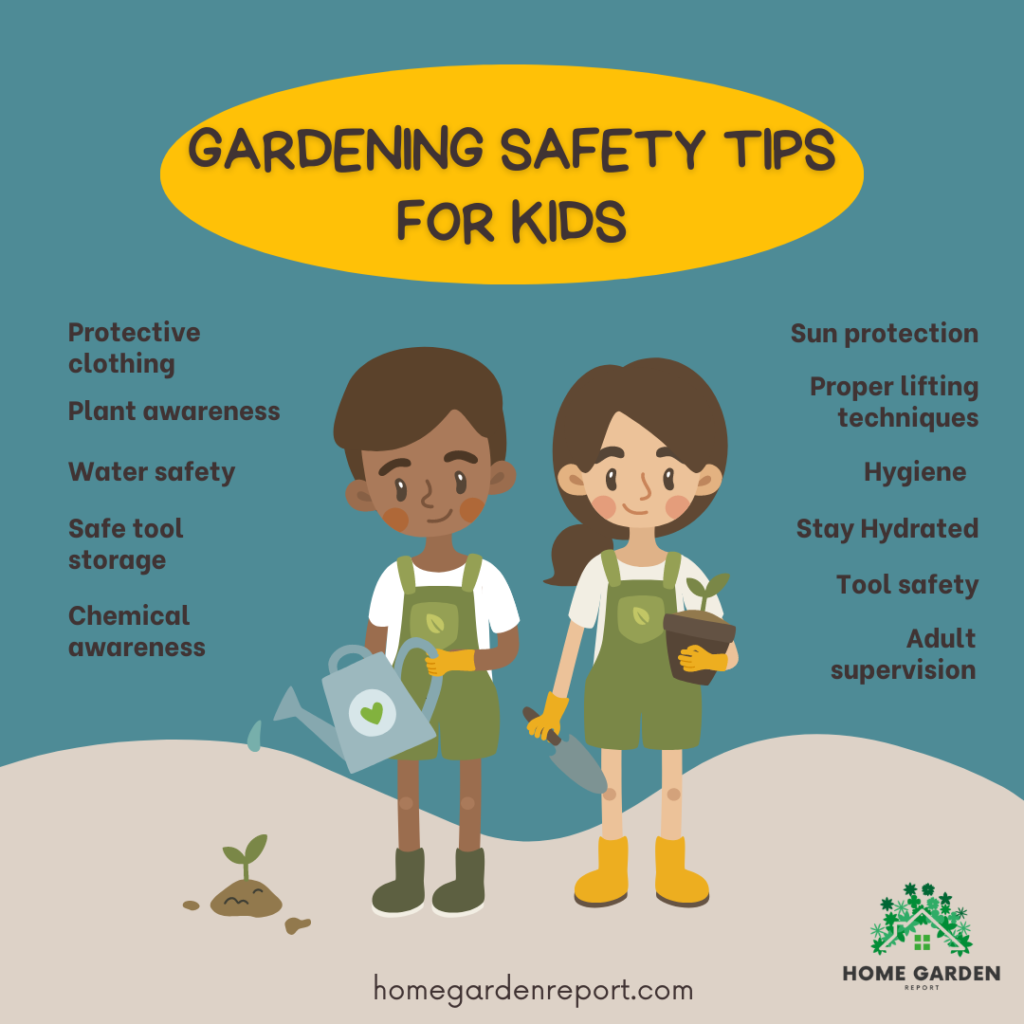
By ensuring safety and providing the right tools, you’re creating an environment where children can confidently explore and enjoy their garden, fostering their budding green thumbs!
In the next section, we’ll delve into the significance of celebrating every success in the garden, no matter how small.
Celebrating Success and Being Patient

Patience and celebration are two essential elements in the gardening journey, especially when gardening with kids.
The Waiting Game
Gardening is an exercise in patience. From sowing seeds to waiting for them to germinate, then nurturing the plant until it flowers or bears fruit, it’s a gradual process. This can be challenging for kids who are used to immediate results. Turn this waiting time into an opportunity to teach your child about the value of patience and the rewards it can bring. Use a garden journal to keep track of growth and changes, and celebrate each small step.

Celebrating Milestones
Every sprout, every flower, every vegetable harvested is a success. Celebrate these milestones with your children, whether it’s through a special meal using the vegetables they’ve grown, or a small party in the garden. Recognition of their efforts will motivate them to continue gardening and take pride in their work.
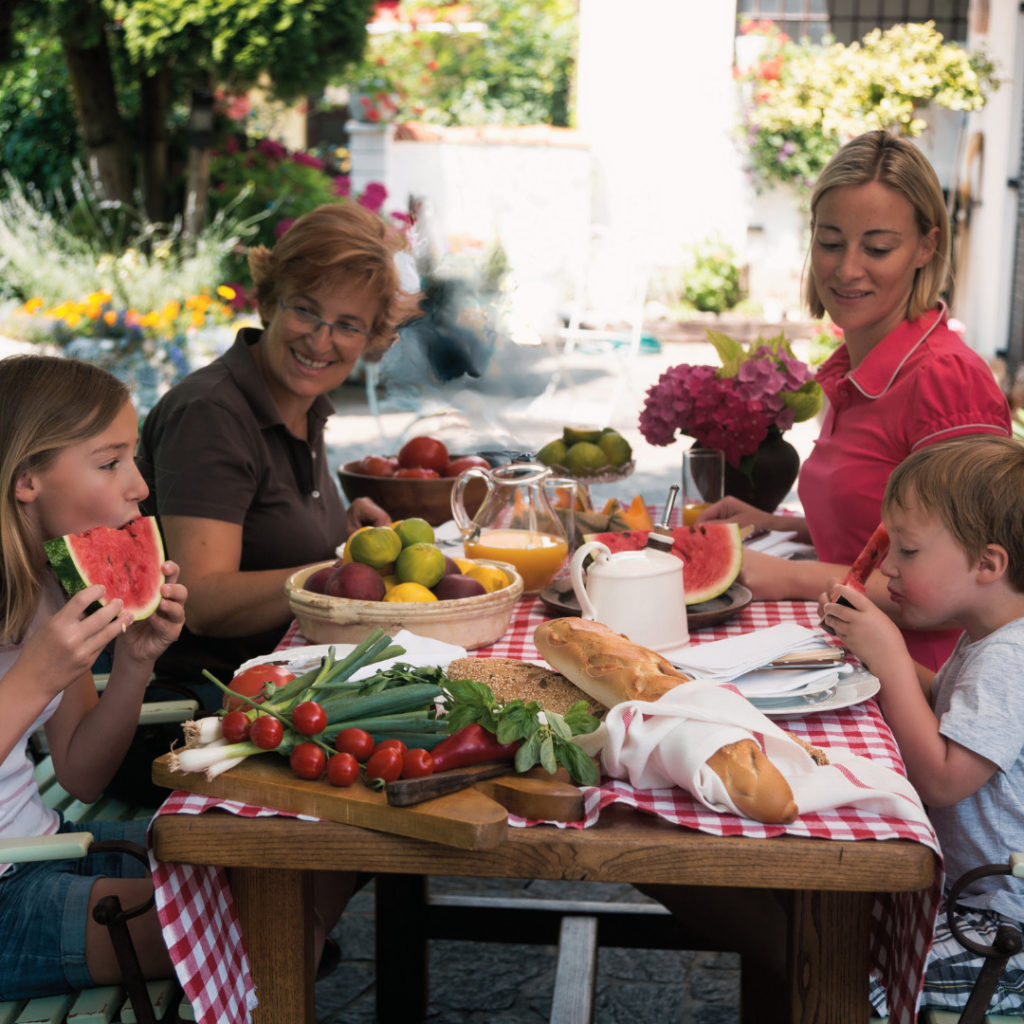
Learning from Mistakes
Sometimes, despite all efforts, a plant may not grow as expected. This can be disheartening, especially for children. Turn these situations into learning opportunities. Discuss what might have gone wrong – was it too little water, too much sun, or the wrong kind of soil? Use this as a chance to teach them that it’s okay to make mistakes and learn from them.

Remember, gardening with kids is about the process, not just the outcome. The lessons they learn about patience, celebrating success, and learning from failure are valuable life skills they’ll carry with them long after they’ve left the garden.
Conclusion
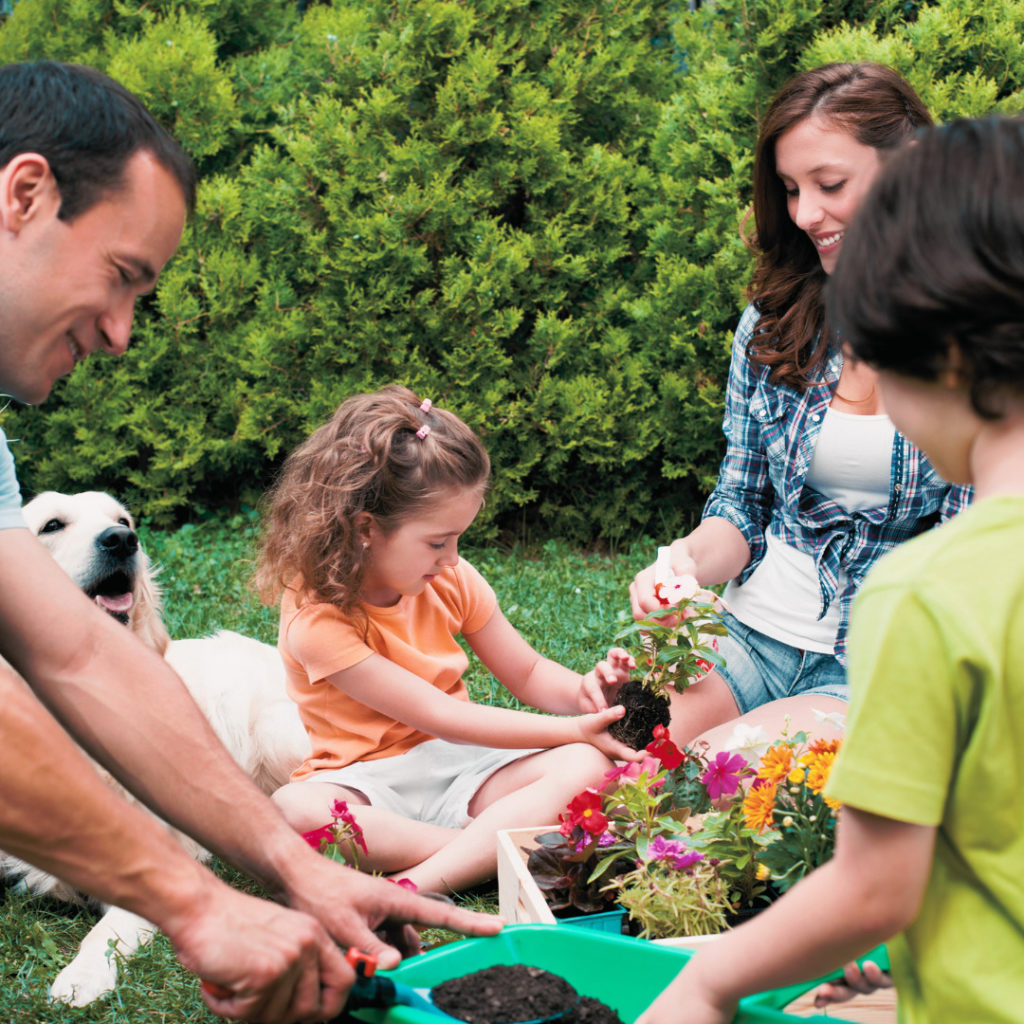
Gardening with your kids isn’t just about growing plants; it’s about sowing the seeds of curiosity, responsibility, creativity, and patience. It’s about spending quality time together as a family, creating memories amidst the soil and the sun, teaching them about nature’s wonders right in your backyard.
Turning gardening into a game, allowing kids to express their creativity, creating a learning experience, ensuring safety, and teaching patience are all powerful ways to get your children excited about gardening. You’re not only fostering a love for nature in them but also helping them grow as individuals.
Remember, every garden, no matter how small or how grand, begins with a single seed. And just like a seed, a child’s interest in gardening might start small – a tiny speck of curiosity. But with the right nourishment and care, it can grow into a life-long passion, bearing the fruits of knowledge, responsibility, and a deep appreciation for nature.
And who knows? Today’s young gardener, nurtured by your guidance, might be tomorrow’s environmental advocate, botanist, or just an adult who knows how to appreciate the simple joy of growing something with their own hands.
